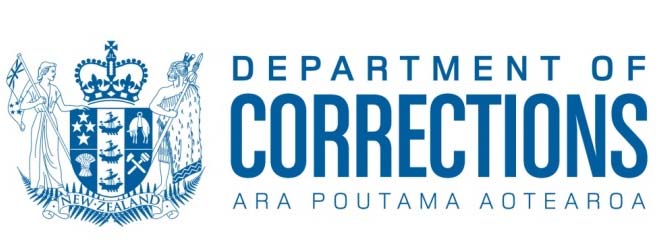

12 August 2021
C138852
Fraser Crichton
[FYI request #16105 email]
Tēnā koe Fraser
Thank you for your email of 16 July 2021, requesting information about prison
transfers. Your request has been considered under the Official Information Act 1982
(OIA).
There are 18 prisons across New Zealand: 17 managed by Corrections and
Auckland South Corrections Facility, which is managed by Serco under a Public
Private Partnership. Since its peak of 10,820 in March 2018, the number of people in
New Zealand prisons has decreased by over 20 percent with today’s prison
population around 8,200. The population at any individual prison can fluctuate daily
due to scheduled releases, sentence end dates and court decisions. Quarterly
prison statistics for each prison from 2009 onwards are available on Corrections’
website, at:
https://www.corrections.govt.nz/resources/statistics/quarterly_prison_statistics
The decision to move any person in prison is made on a case-by-case basis.
Consideration will be given to each individual’s employment, education and
treatment needs and the ability for their family and friends to continue visits with
them, as well as how best to safely and securely manage the prison population in the
surrounding region. Corrections always aims to ensure that people in prison are in
the most appropriate accommodation for them, increasing their access to
employment, education and rehabilitation programmes and improving the working
conditions of our staff. Accordingly, we cannot guarantee that a person sentenced to
imprisonment will remain in any one prison during the duration of their sentence.
Prisoner movement coordinators determine transfers between prisons, in
consultation with Prison Directors. A number of factors are considered when
determining an individual’s suitability for a transfer, including prison population
management and proximity to family. People in prison can request a transfer to a
different prison, however, priority is generally given to those who require a special
placement for site specific reasons, like attendance at special treatment
programmes, medical procedures, court appearances or for parole purposes.
2
Prisons vary in significantly in size and operational differences, these factors may
also affect the suitability of a person’s placement at that site. For example, Auckland
Prison is New Zealand’s only specialist maximum security facility, while Mt Eden
Corrections Facility is the main reception prison for newly remanded male prisoners
in the Auckland region and at any point only a small proportion of its population will
be sentenced prisoners. The range of rehabilitation programmes also differs
between each prison, as do the vocational and industry training opportunities
available. Information about each prison is available at:
https://www.corrections.govt.nz/about_us/getting_in_touch/our_locations
You requested:
I'm interested in tracking non-identifying data on prisoner transfers within the
prison system in Aotearoa. If possible I'd like data for prisoners sentenced and
on remand for the period 2011-2021 and specifically:
- the date of transfer
- the name of the prison that the prisoner was transferred from
- the name of the prison that the prisoner was transferred to
It would be really helpful if you could also include:
- the reason for their transfer
Please provide this information in an accessible, searchable format. I would
prefer to receive the requested figures in a machine-readable spreadsheet
format, such as CSV or XLSX.
Attached as Appendix One is a spreadsheet detailing prison transfers between 2
July 2018 and 22 July 2021. This breaks down the data into all the categories you
have requested above.
To find full explanations on the ‘Reasons’ listed, visit the Prison Operations Manual,
Section M.04.03.02 here:
https://www.corrections.govt.nz/resources/policy_and_legislation/Prison-Operations-
Manual/Movement/M.04-External-movement-transportation-of-prisoners/M.04.03-
Inter-prison-transfers
The information provided to you in Appendix One is sourced from a national registry
for prisoner transfers introduced in November 2018. This new system was rolled out
across prisons from November 2018 to 1 July 2019. As such, although the register
includes data from 2 July 2018 onwards, information dated before 1 July 2019
should not be considered complete, but is provided to the best of Corrections’ ability.
You have requested all data from 2011 to 2021. Prior to November 2018, prison
transfer data was managed in separate spreadsheets that were updated weekly and
compiled at prisons across the country. We are therefore partially refusing your
request, as it relates to transfers that occurred prior to the introduction of the national
register in 2018, under section 18(f) of the OIA as the information requested cannot
be made available without substantial collation or research. In line with section
18(A)(1) we have considered whether affixing a charge or extending the time limit
would enable the request to be granted, however we do not believe so in this case.

3
Where an individual has been transferred multiple times would it be possible
to assign that person a non-identifying code so it's possible to track the prison
facilities they have been incarcerated in?
As mentioned above, people in prison can transfer for any number of reasons. You
will note that the attached appendix records over 27,000 transfers. To analyse all
these cases and codify them in the way you describe would impair the effective
administration on the general operations of the small prison population team based
at Corrections’ National Office. As such, this part of your request is refused under
section 18(f) of the OIA, as the information requested cannot be made available with
substantial collation or research. As per section 18(A)(1), we have considered
whether either fixing a charge or extending the time limit would enable the request to
be granted. In this case, we do not believe this to be the case.
I trust the information provided is of assistance. Should you have any concerns with
this response, I would encourage you to raise them with Corrections. Alternatively,
you are advised of your right to also raise any concerns with the Office of the
Ombudsman. Contact details are: Office of the Ombudsman, PO Box 10152,
Wellington 6143.
Ngā mihi
Rachel Leota
National Commissioner


